While aging buildings and infrastructure are an ever-growing concern for colleges and universities across the country, an equal focus needs to be placed on another aging asset: the facilities workforce.
According to a recent survey by IFMA, the average facilities management professional is 49 years old today, and 50% of this workforce is expected to retire within the next 5-15 years. This issue, compounded with the fact that less than 10% of IFMA’s members are under 35 years old and that future buildings will require much more advanced technical and digital skills, is a critical problem for our universities.
There is no one-size-fits-all solution for planning for this rapidly approaching shift. So we asked higher education facilities leaders from across the country (and the UK) how their institutions are preparing for an aging workforce and a lack of skilled trades.
Let's dive right in...
PETE STRAZDAS
Associate Vice President, Facilities Management - Western Michigan University
“So, what is my department doing to prepare for an aging workforce and lack of skilled trades? This topic was brewing before the recession and has been front and center a couple years ago. We are past the get prepared stage! The economic turnaround has pushed this agenda to the top of everyone's list. Here are some thoughts on this very important topic:
1) Create a first-class FM team that others across campus or those off-campus want to join. We have a Senior Director opening, and some of the best people off campus are applying for the job. The skilled trades off campus know about our work environment and level of professionalism, so overall, we get good applicants. Being the best-in-class helps get quality people and also helps with funding from administration, a great team environment, and so much more.
2) Succession planning. When possible, create a succession plan for all critical positions. We have that set for our Power Plant Director and several other areas in FM.
3) Keep your people. Money is not everything. I had some staff leave us for more money and then came back. The work environment, the spirit of cooperation, the joy of success, and the list goes on. Training is important.
We talk a lot about "deferred maintenance"...we need to focus on "deferred education".
And if you are concerned about spending money on training and they go elsewhere, try not training them, and they will stay with you!
4) Consider looking at retirees—yes, the growing and largest part of our population. The stock market has been very volatile, and some seasoned people are looking to come back part-time.
5) Those entering the workforce are not like me! Generation Z just started higher education. Millennials make up the majority of the workforce. They use technology differently, and their needs and wants are different from those of the Boomers. If we don't understand that and don't adapt to organizational culture changes for those in and entering our workforce, we will have a dying organization.
6) Skilled trades shortage. For the last couple of decades, we have been telling all kids in high school they must get a college degree. While many are not prepared or want to go to college, the message they received is college is the better path than a dirty or unsafe job in manufacturing or construction. With the skilled trades shortage, the message MUST and has begun to change. Manufacturing is cleaner and safer. Construction is more high-tech. And many skilled trades are paid more than the average college entry-level job. I am on a committee with all of the area high schools in my County to campaign for a skilled trades path.
7) Focus on those leaving the military. APPA has a formal program with military engineers, and the US Chamber of Commerce has a formal program to connect people leaving the military with a civilian job. The individuals leaving the military have a high level of discipline, are willing to learn, and follow directions well.
There is no silver bullet for this problem, which is growing to crisis levels in parts of the US. An all-of-the-above approach is needed."
MIKE PEREZ
Associate Vice President, Facilities Management - University of Utah
“It is important to develop talent that will best deal with the continuing challenges facing higher education. Each institution varies the challenges given the type (research, regional, college, etc.) and location. However, the common denominator is that costs have to be reduced while dealing with aging and deteriorating assets. To this end, we need not only folks who can manage the typical technical and organizational challenges but ones who can think "outside the box.” What can be done differently that will preserve and/or enhance assets while supporting the institutional missions? To this end, we need intelligent critical thinkers and leaders.
One of the things we’ve done at the University of Utah is to invest in education.
We have a scholarship fund in place that provides funds for any employee within FM to assist in advancing their education (there is a committee who awards these scholarships every semester).
We’ve identified up-and-coming performers and worked with them to give them skill sets to be successful as they contemplate advancement. This is done by enlisting them in training programs for leaders, both through professional organizations (APPA, SCUP, IFMA, etc.) and within the University’s portfolio (Human Resources, Business School, etc.).
Although we have not done so consciously, we’ve mentored some of our aspiring leaders. This has happened infrequently and usually as a result of the employee desiring assistance (good for them), but I see the value of an organization enlisting and supporting key employees that we see as our future leaders (something we should do going forward).”
JOHN MOORE
Assistant Vice President for Facilities Management Services - Rochester Institute of Technology (RIT)
"The answer to your question in short is training. We actually had a good conversation about this at the 2015 Higher Ed Facilities Forum in San Antonio with several other leaders.
The concern is three-fold. First the systems associated with our campuses have been transformed over the past 5 years. Access technology, security systems, energy controls, lighting controls, new power systems, and robotics, have surpassed our current staffs capabilities to maintain and repair these systems. We need to bring in training to support the current employees and new workers who come in with these skills.
The second issue is the lack of people entering the skilled trades. The construction industry consumes the human resources that do complete the union apprenticeship programs for skilled trades.
The third issue is that construction industry salaries far exceed the capacity of universities and would create large inequities with existing staff. Our strategy is to invest in our staff and bring in training to develop skills within existing staff. We are also developing an internal “training program” (modeled after an apprenticeship program) to train non-skilled trade existing staff to be prepared for future skilled trade openings.
In support of these programs we are actively searching for and review academic programs available at community colleges, private sources and online sources to support the training programs.
There has been a great deal of interest in this program within NY. I also know that Arizona State University and the University of Akron have developed apprenticeship programs of their own. I am referencing these programs in our program here at RIT.
We are considering obtaining NYS approval of our training program as an official apprenticeship program in the future. There are federal grant programs available to support these training programs although we have not applied for that funding at this point."
PAUL GOFFIN
Director of Estates - University of Oxford
"The University of Oxford has unique challenges related to this area. Below are some of the challenges followed by how the university is looking to confront them.
Challenges: The current jobs market is quite buoyant – there is more demand than supply particularly in the construction and engineering sectors.
The jobseeker’s market keeps salaries high – the University grading structure does not allow us to compete with private companies and we have lost a number of experienced staff to consultancies who can offer better packages.
The Oxford housing market is very expensive and there is insufficient affordable housing for our staff – this affects both recruitment and retention and means that over half of our staff travel in from outside of Oxford. We are able to offer market supplements in some areas, but this gives us problems with staff already in post – there is then the potential for discrepancies in salary for the same role in some cases.
Due to the way that the University is structured, and to its recruitment policies, it is difficult to offer succession plan roles. Succession planning is not seen as a priority as we are a very attractive employer due to the nature of Oxford University. However, succession planning has been high on my agenda for the last three years.
We are not able to offer competitive packages in the fields of engineering, senior facilities management, project management as these are sought after in the commercial markets. Due to the current nature of the jobs market in the UK, more staff are looking elsewhere – without the flexibility around salary and benefits, we are already facing retention issues.
Due to the complex nature of our estate, the field of candidates with relevant experience is small.
Solutions:
We have a number of apprentices employed within my Estates team – currently over 10. We are not limited on the number of apprentices that we can appoint, but there has to be a need to bring in staff at the starting level. They are usually appointed for a year, but there is no guarantee that there will be a permanent position at the end of the apprenticeship – it depends on the individual and the need.
We have a very good training and development programme and we have a departmental training needs assessment.
This is good in many ways as we can develop and bring our staff up to a higher level, but the danger is always the we develop our staff who then leave for better roles.
We are also exploring as to whether we might be able to set up a ‘Shared Services’ company to deliver capital projects. This would allow us to operate on different terms and conditions, including salary. We are currently taking advice as to how this might work, but the benefits could be huge in terms of attracting and retaining staff if we can operate outside of the University’s usual grading structures."
TOM MORRISON
Vice President, Capital Planning & Facilities - Indiana University
"I think your question has two different perspectives. First, we must consider the aging of our own workforce internal to the University. Second, we must address the changing external workforce of architects, engineers, and construction services and trades.
Internal to the University, this is a regular issue of proper human resource management. Higher education institutions benefit from a very stable workforce. Once hired, individuals tend to remain with us for long periods of time. Our turnover rates are very low. We benefit from those years of experience. During periods of growth in the economy, we are at risk of losing good people whether through other jobs or retirement, and the converse is true during bad economic times. In order to retain the workforce, we must sell stability as retirement waves hit. However, we must also remain always committed to training and the hiring of new people with fresh approaches and adept at the latest practices in the industry. Maintaining a stable workforce in a business of constant change is a balance. We must promote the stability of our jobs while also seeking and encouraging the latest in experience.
The external markets have been in a constant state of flux since the recession. The recession wiped out nearly a generation of people who either left the business or decided to leave when jobs were eliminated. Thus, as the economy has rebounded the industry is having trouble with ramping up its workforce to meet demand. Owners of construction, architect, and engineering firms constantly echo this concern. As large purchasers of these services, we must help promote opportunities in the industry while also understanding the growth in prices is due to lack of workforce supply. While expenses related to labor have been climbing due to this demand, fortunately materials prices have been steadied by falling petroleum and steel prices. The reverse was true during the recession. Our job is encourage more to re-enter these professions to offset previous losses and to sustain ourselves coming into the next recession.
Many older people were laid off during the recession and we should actually encourage their return.
Fortunately, in the Midwest market, we see less drastic impact than those on coasts, in warmer climates, and in major cities."
KELLY SCHMADER
Assistant Vice Chancellor for Facilities Management - UCLA
"UCLA is continuing our apprentice program, where we take “unskilled” workers that have the demonstrated aptitude to learn through a four to five year apprentice training program that results in them becoming skilled trades workers.
Some of our best journeyman in our workforce today are graduates of this program!"
ROBIN MOREY
Vice President, Planning and Facilities Management - Georgetown University
"We are focused on “building a bench”. This concept is broadly used to describe our attempt to formally identify in-house talent in many of our labor shops. We identify talent through a competitive selection process based on potential vs. skills and promote our selected personnel to the worker and helper level while training them to achieve appropriate full mechanic level with associated certifications/licenses.
This approach is also supplemented to ensuring we have updated position descriptions which are classified at the appropriate pay level for journeymen mechanics.
Finally, we conduct target recruiting at local trade schools and colleges for specific skilled trades."
Posted by
Join us at HEFF!
An interactive retreat for facilities leaders at the nation's top colleges and universities.
Nov 8-10, 2026 | San Antonio, TX
Learn More

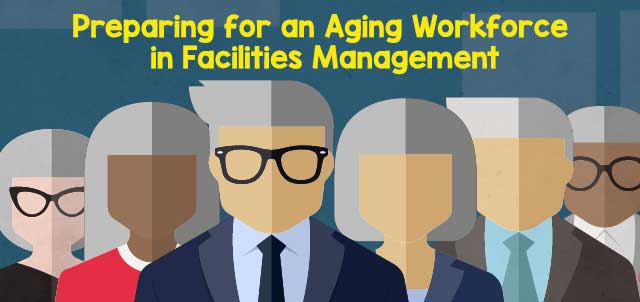
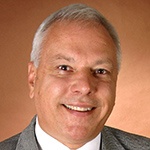
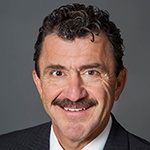



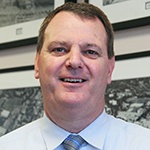
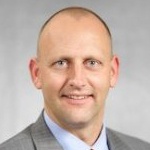







Comments